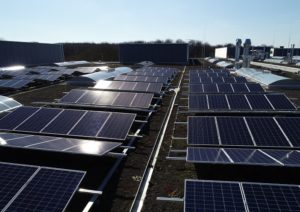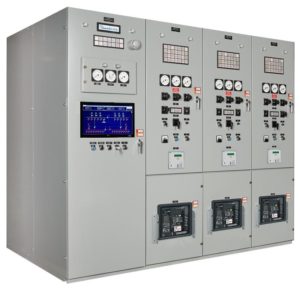Editorial: Key Themes Coming Out of an Evolving Hannover Messe
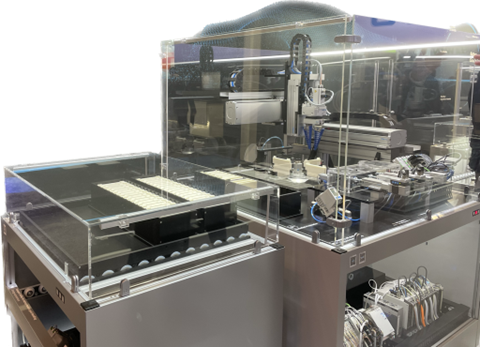
Battery Recycling Application Demonstration from Festo. (Image source: Interact Analysis)
As more sustainability-conscious legislation, such as the Net-Zero Industry Act and the EU’s Eco-Design Initiatives, are being enacted, industrial automation technology is being pushed to evolve to support these efforts. Additionally, we continue to see increasing emphasis placed upon flexibility within intralogistics. Both of these trends were on prominent display throughout the fairground. In this insight, we aim to highlight the products on display that we believe most clearly represent the current status quo within the industrial automation markets we cover.
Against the Backdrop of High-Electricity Prices Across Europe Energy Efficiency Technology is Paramount
Following the invasion of Ukraine in early 2022, energy markets across Europe have been greatly destabilized. While prices for electricity largely peaked in August of 2022, the shell shock from a turbulent year is still heavily affecting manufacturers. This, coupled with the EU’s goal of becoming a climate neutral society by 2050, placed energy efficiency-enabling technology at the heart of this year’s Hannover Messe.
While motor drives are inherently an energy efficiency device, new models are pushing this idea even further. Nearly all drive vendors that exhibited at Hannover Messe were displaying models of their drives which provide additional efficiencies to the system through features like regeneration, harmonic mitigation and electronic bypass. Below are some examples of drives on display that demonstrated some or all of these features:
Yaskawa U1000:
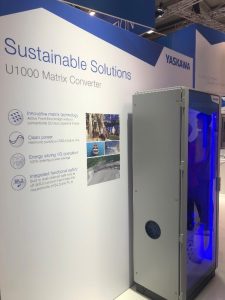
While the U1000 matrix drive has been available in Yaskawa’s portfolio for nearly 8 years, its premium energy efficiency features made it the perfect drive for Yaskawa to prominently display given the backdrop discussed above. In addition to regenerative braking and harmonic mitigation features, the U1000 has an electronic bypass mechanism which effectively shuts off the drive when the energy demands of the process at hand is equivalent to what is coming directly off the grid.
Siemens G220:
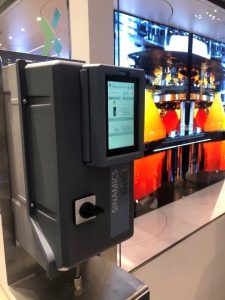
Earlier this year, Siemens announced the update to its popular G120 drive. The G220, in addition to having many features which support Siemen’s Xcelerator portfolio and broader digitalization strategy, has multiple ‘premium’ models that include regenerative and harmonic mitigation features.
Increasingly, we are finding that, in addition to producing less electromagnetic ‘noise’ in the system, harmonic mitigation functionality is beginning to be positioned as an energy efficiency feature, particularly in Europe. In the US and areas like the Middle East, strong demand for harmonic mitigation techniques has resulted from grid instability issues, while in places like the EU, which have taken more explicit steps to modernize the grid over the last few decades, grid instability is less of a concern. As a result, repositioning harmonic mitigation as an energy efficiency solution is proving an effective method to sell the solution in European markets.
Motor Vendors – IE4 & IE5 Technology:
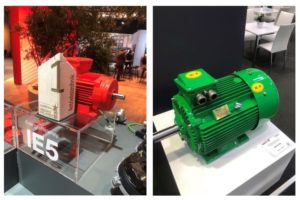
2023 is a big year for the low voltage motor market, particularly in Europe. In July of this year, the EU Eco-design Initiative will mandate that motors between 75kw and 200kw carry an efficiency level of IE4 at minimum. This represents the first time IE4 efficiency levels will be required in any region. In preparation for this legislation, many vendors of motors had their high-efficiency capabilities on display at Hannover Messe.
Despite the standard not being properly defined yet, many vendors were going beyond IE4 to show their IE5 capabilities. Among motor vendors a big question mark still hangs over which motor topology will be the predominant choice for those looking to implement IE5. Technologies available that reach IE5 level efficiency include synchronous reluctance motors, various permanent magnet motors, axial flux motors and switched reluctance. Each has its own benefits and drawbacks depending on the nature of the application in question. Interact Analysis is planning to conduct research to assess the market opportunity for each of the high-efficiency motor topologies.
Battery Manufacturing and Recycling – Festo
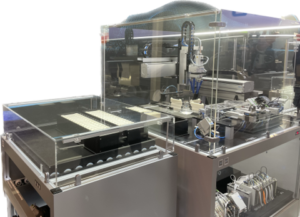
According to the European Federation for Transport and the Environment, Europe comprised 41% of new investment in lithium-ion battery production in 2021. However, legislation from other regions, such as the Inflation Reduction Act in the US, posed a threat to European industries, with the US act incentivizing European manufacturers to expand their operations within the US. Europe’s answer to this is the Net-Zero Industry Act, which aims to push the EU to produce more of its technology domestically and localize supply chains. As a result, battery manufacturing in Europe is expected to see increased investment in order for the continent to remain competitive globally.
Smart Conveyance Technology – LS Electric Presents X-Trak (Moving Magnet Solution)
Alongside energy efficiency, Interact Analysis has also provided substantial commentary about new entrants shaking up the supplier landscape for smart conveyance technology (here). Hannover Messe provided further evidence of new vendor activity, with LS Electric showcasing its X-Trak (Moving Magnet Solution), a multi-carrier motion control system based on direct drive linear motor technology.
LS Electric’s X-Trak has so far been applied with success to flat panel display (FPD) manufacturing and inspection, but its payload (which it is claimed can range from kilograms to tonnes) would also make it suitable for automotive and battery manufacturing applications, as well as the currently more common smaller payload applications such as semiconductor, pharmaceutical, medical device and mobile phone production.
This emerging technology, which is designed to offer high speed with accuracy, maximum throughput and flexibility, was seen in abundance at the show. Leading vendor Beckhoff Automation showcased its XTS linear smart conveyance system and XPlanar planar systems alongside one another, and plans are afoot for other new vendors to enter this immature market in the future, helping to boost its growth potential above and beyond the traditional motion control market.
Final Thoughts
The focus for Hannover Messe has shifted over the years to incorporate a broader range of technologies, and it can be difficult to find common themes across products as a result. However, flexibility, energy efficiency and sustainability were clearly identifiable in the products on display across the industrial automation halls. This perhaps speaks to the strengths of these trends across Europe. While energy prices and supply chain woes remain a concern, you can expect continued emphasis to be placed on solutions like the ones we observed at Hannover Messe 2023.
Source: Interact Analysis


